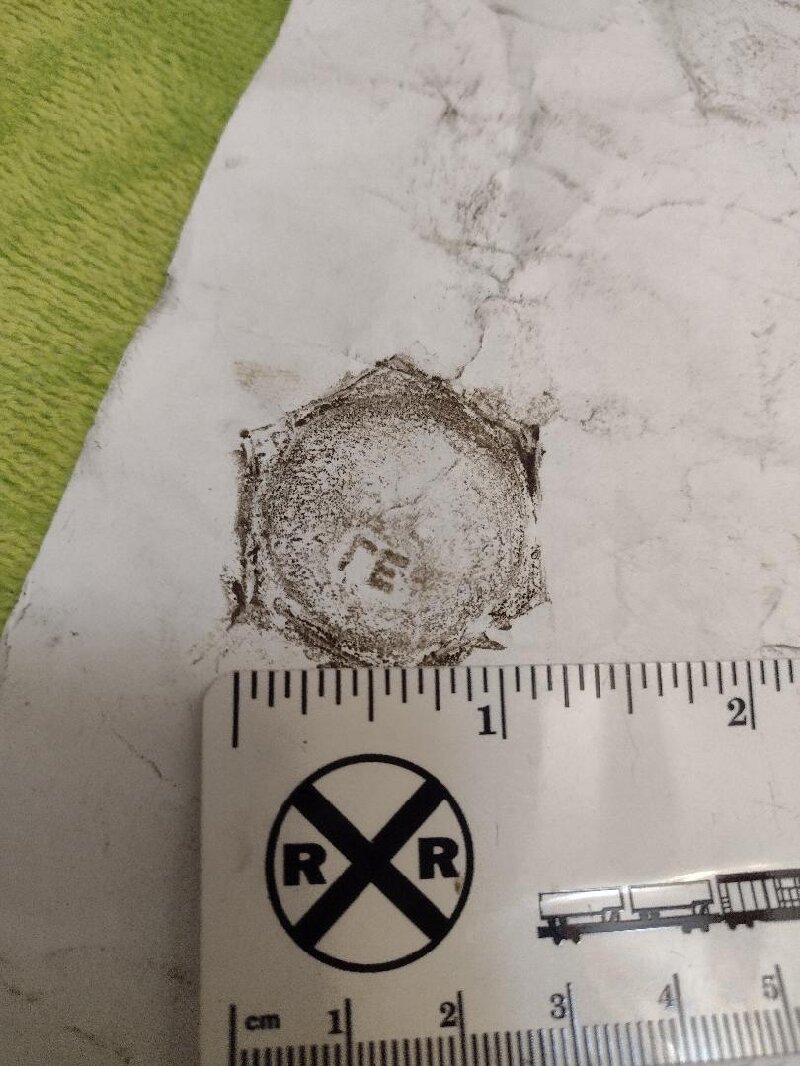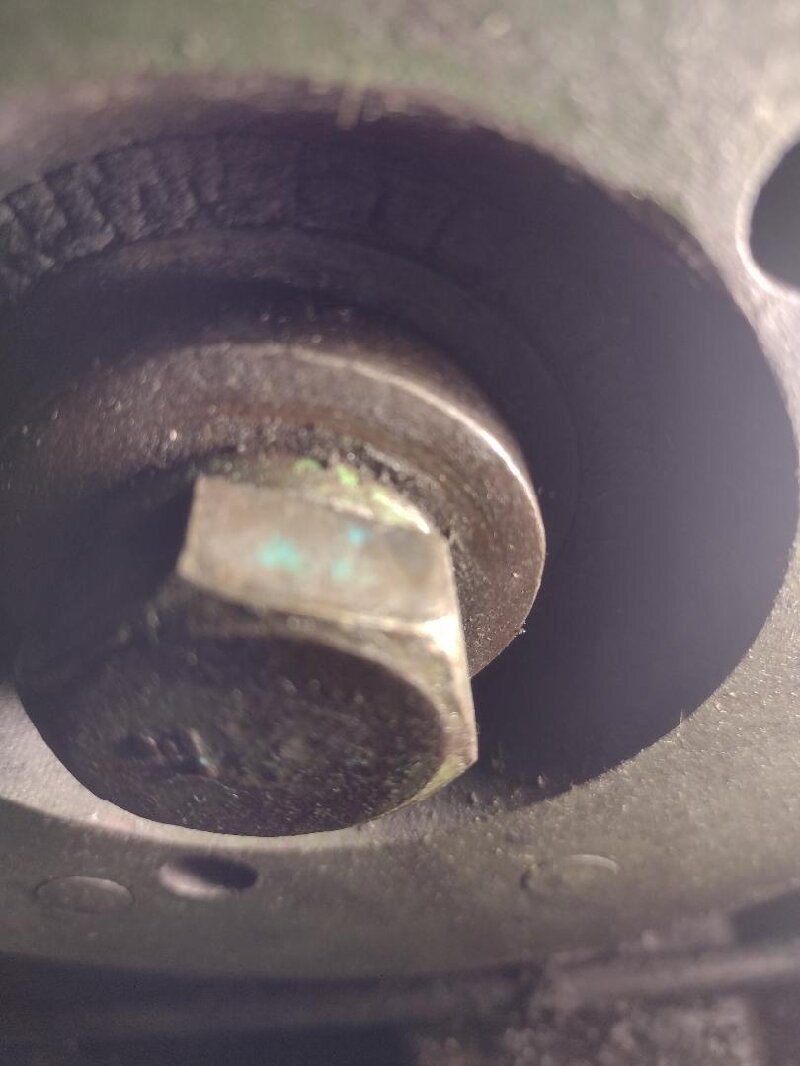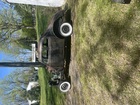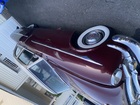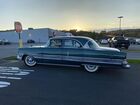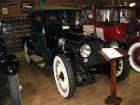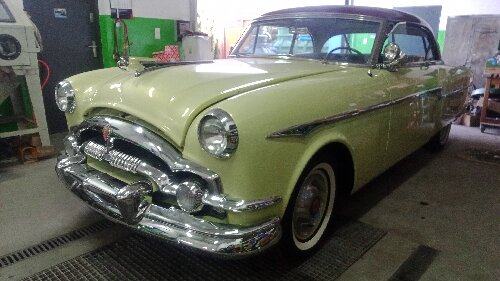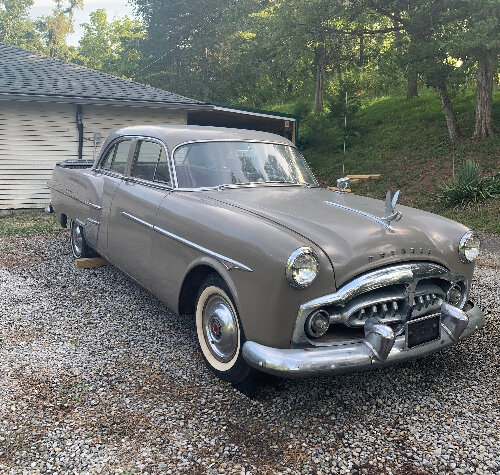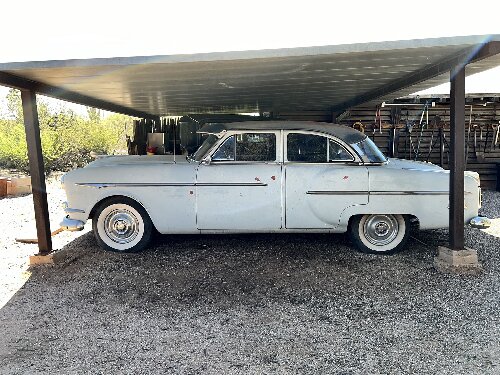|
Re: 1937 120 Caster
|
||||
|---|---|---|---|---|
|
Home away from home
|
That's the name. Gary Russell. Much insight. Thanks, BDeB.
Posted on: 2/22 23:05
|
|||
|
||||
|
Re: 1937 120 Caster
|
||||
|---|---|---|---|---|
|
Home away from home
|
A big, softbound book by a lifetime Packard wrench in the Pacific NW region whose name escapes me, "Packard Tips," for drivers of all models 1935-56 included the attached. Pardon muddled opening paragraph:
Posted on: 2/22 21:27
|
|||
|
||||
|
Re: What size vibration damper bolt head do you 356 owners have?
|
||||
|---|---|---|---|---|
|
Home away from home
|
Thank you, gentlemen. Your detailed candor underscore that Packard was indeed "A gentleman's car, built by gentlemen."
Both the 356 bolt #341404 head size 1 3/4" and the junior # 304128 head size 1 1/4", are, other than head size, identical: 3/4-16. The senior bolt's additional 1/2 inch head width allows it to forego a washer since it has more metal against the vibration damper, albeit it being a thinner head than the junior bolt, which calls for a lock washer. Just discovered my engine has a 1 1/4" vibration damper bolt head. A lifelong Packard wrench tells me it doesn't matter what size bolt head i have. Assume this another case of Packard's over-engineered overkill? The junior vibration damper is a few pounds lighter, but that's the only difference. Sure, the perfectionist, OCD in me, beloved of factory standard, would like to have the 1 3/4 bolt. But given there's only 2 3/4 inches between the face of the vibration damper and radiator in my '47 Super Clipper, and the car's traveled 16,000 miles since hot tanking, machining, balancing, assembly by my late mechanic's mechanic, who ran motor pools in the War II Pacific, then worked at a Packard dealer before my car left Detroit, then various Hudson dealers setting up winning cars for the Capitol and Sacramento speedways, then a Pontiac dealer before starting his own renowned shop in 1958-59; and given the above's assurance it doesn't matter, i am sorely tempted to live with 1 1/4. What think you? BDeB's experience using a 3/4" drive doesn't surprise. For those with a 1 3/4" bolt head, you'd think a 1/2-inch drive 1 3/4" socket would fit that cramped space given the 1 3/4" bolt head is thinner than the 1 1/4" junior and doesn't have a washer and lock washer, is recessed in the damper cavity. The 1 1/4" bolt head protrudes slightly. Meanwhile, MJG, i f it comes to yanking everything out, consider lightening your flywheel. I've heard a Packard maven report doing so to a 356. Wish i'd so done mine when for the sake of an effing $18 pilot bearing which squalling would wake the dead, we had to remove the transmission, so thought i'd replace the F-series Ford truck clutch so many 356 owners use, for a Packard pressure plate rebuilt using the original jig. As long as we were in the neighborhood. But, my flywheel's still stock weight. I bow to others' insight regarding this and don't want to give MJG a bum steer.
Posted on: 2/22 0:32
|
|||
|
||||
|
What size vibration damper bolt head do you 356 owners have?
|
||||
|---|---|---|---|---|
|
Home away from home
|
The head size for the 356-ci engine's vibration damper bolt, #341404, 1 3/4 inches, is listed as 1 1/8th inches in both pre- and postwar Packard Parts Books. This mistake was never amended because, a rarely changed or addressed part, no Packard serviceman brought it to the attention of the shop foreman, who in turn alerted the zone rep, East Grand Avenue.
Posted on: 2/19 23:58
|
|||
|
||||
|
Re: shelf in Light Eight Coupe
|
||||
|---|---|---|---|---|
|
Home away from home
|
Ronald -- John Ulrich, Ulrich Packard Parts in Richmond/Oakland, CA (the San Francisco Bay Area) has long owned a splendid '32 Light Eight Roadster (pictured on his below website) and knows these cars inside and out. John is also a good source for any and all parts for same. So contact him and please tell this worthy that Mike, '47 Super Clipper, Walnut Creek referred you. John specializes in 1928-47 parts.
https://julrichpackard.com/ BTW, your description of your lovely coupe on the Vehicle Registry here sounds almost apologetic for your well done survivor "not being in the usual happy colors." Stuff and nonsense. Your Light Eight is both elegant and jaunty in its refreshingly understated color scheme, and all the more sporting --an international mien -- wearing her simple black pumps. Here in the States, we see more Packards, and vintage cars in general, ruined by circus wagon colors, white wall tires,and too many bolt-on options, which most Packard owners in the day considered gauche. A quietly arresting car, yours. Bravo. By all means, get a copy of The Hemmings Motor News Book of PACKARDS. It contains a terrific, detailed article about the '32 Light Coupe by the most knowledgeable, erudite Michael Lamm, founder and first editor of the much missed Special Interest Autos. You should be able to find a copy online or by calling Hemmings at (800) 227-4373, www.hemmings.com
Posted on: 2/13 15:12
|
|||
|
||||
|
Re: Had to laugh
|
||||
|---|---|---|---|---|
|
Home away from home
|
Bob J knocks it out of the park.
Posted on: 2/3 3:57
|
|||
|
||||
|
Re: Had to laugh
|
||||
|---|---|---|---|---|
|
Home away from home
|
Whitewalls on a staff car. Good one. Thanks. But wasn't Custer's a Studebaker?
Posted on: 2/2 18:21
|
|||
|
||||
|
Re: Had to laugh
|
||||
|---|---|---|---|---|
|
Home away from home
|
Right, and how many Bonnie and Clyde Fords were circulating Midwest fairs in the '70s? We thought the May-June 1976 issue #34 Special Interest Autos piece thoroughly debunked the "General MacArthur Packard Clipper," explaining that MacArthur was chauffeured occasionally in a '42 Cadillac 75 limousine belonging to the owner of a Philippine sugar plantation.
A new generation of buffs is now certain MacArthur had a '42 Packard Clipper staff car, abetted by down home museum displays of olive drabbed, blacked out Clippers -- some of them postwar models at that -- and the internet. Ike, Omar Bradley and some other high brass in Europe did get '42 Packard One-Sixty/One-Eighty Clipper staff cars. Have you noticed the rabid interest in war materiel invariably in those who never served, or did so in the peacetime military, or the reserves--never combat vets? We've even seen paeans to Packard-built Rolls-Royce Merlins to the point where one duffer said he could tell by the sound of one running up or taxiing whether it was one of the 55,523 built in Detroit, or 112,945 Merlins produced by Rolls-Royce in Crewe, England, Glasgow, Scotland, or Ford of England (Manchester). Improvements from either side of the Atlantic were quickly incorporated in both's next series, lifelong Merlin rebuilders reporting the sole difference the Brit versions' finer external finish. Packard otherwise had nothing to do with the Merlin beyond enlisting a platoon of draftsmen at taxpayer expense to redraw the engine for US methods. It was an impressive undertaking, but hardly an act of altruism, wartime ads aside. Packard's legal counsel Henry E. Bodman rewrote the Merlin contract so it became the basis of governtment contracts for years to come, Packard one of only two automakers to emerge profitable after the war. And look how Packard blew this second lease on life (their first the excellent '35 120): spending as much clobbing 200 additional pounds of glop on the svelte Clipper as an entirely new body would've cost, and producing, with help from Detroit Gear, essentially a Dynaflow with lock-up torque convertor because GM would not allow Packard to use HydraMatic for an entire year after introducing any improvement. The liquid cooled, 1,650-ci Merlin V-12, quickly adopting a two-stage, two-speed supercharger, was the second most produced aero engine by any combatant of the war; only the 1,830-ci air-cooled, turbocharged, two-row 14-cylinder Pratt & Whitney Twin Wasp radial eclipsed it with help from Buick; 173,618 to Merlin's 168,468 total, narrowly making the R-1830 the most produced engine in aviation history. And yet we have war buffs raving the P-51 Mustang just had to be the best pursuit plane of the war because it had a "Packard" engine, overlooking the Spitfire, Focke-Wulf 190, the Zero, P-47 Thunderbolt, Yakovlev 3, the Corsair, P-38 and others all purpose built for specific engagement and use, precluding the idea of a single "best," those flying them quick to accord respect for enemy designs. Packard concurrently produced all 12,103 of the 2,490-ci marine V-12s for the patrol torpedo, Army and British rescue boat fleets. ELCO's beautiful woodworking aside, the Diesel German Schnellboots, S-boats, fast boats, were considered superior, including by JFK and others who experienced both, another wartime aside many suffering one marque-itis overlook. Gasoline at sea more dangerous than Diesel, but gas simplified our logistics, and there never was a domestic gas shortage. Rationing and 35 mph speed limit were to conserve vital rubber. The PT boats were such gas hogs they often had to be towed back to base after sortees by destroyers. This "General MacArthur Clipper" bolshoi is a good time to park the odes to military hardware, try to remember the hell the infantry suffered in the war that erased the last of the world's innocence, left 71 million men, women, children dead; three percent of the globe's population, sidelined peacetime science: 1939's cyclotron, 1940's electron microscrope, live television broadcasts from the 1939-40 NY World's Fair, though the first major TV broadcast was of the 1936 Berlin Olympics, where American athlete Jesse Owens embarrassed Hitler, only to be snubbed by FDR when he returned home. In June, 1943, just as the US was, with much blood and sacrifice, both domestic and Russian, as well, as Brit, French, Polish, Czech, gradually wresting victory from a Germany running out of oil, 25,000 whites walked off the job in a wildcat strike at Packard, after the Company finally promoted three blacks to work alongside whites, sparked when one of the "gentlemen building the car for gentlemen" yelled "I'd rather work next to Hitler or Tojo than a n--word!" This event slowed critical war production. The point of this expansion is perspective. The war did nothing for Packard's automobiles. Quite the contrary. I doubt the quality of my '47 Buick Roadmaster according to Packard (Super Clipper) is better, let alone as good as, the '42 version, and you can probably say that for the 1946-47 versions of all other makes. There are websites for those who want to have Batman vs. Superman debates over military gewgaws. Some of us would like to stick with a u t o m o b i l e s; their design, engineering, competition, servicing, rebuilding, and not just, to the last lockwasher, how they were built, but why. "The hills and rivers of the lowland country You have made your battle ground. How do you suppose the people who live there Will procure firewood and hay? Do not let me hear you talking together About titles and promotions; For a single general’s reputation Is made out of ten thousand corpses." --Ts'ao Sung (c. 830 – 910) Chinese poet of the Tang Dynasty.
Posted on: 2/2 5:08
|
|||
|
||||
|
Re: Another accolade for Michael Grimes at Merritt Packard
|
||||
|---|---|---|---|---|
|
Home away from home
|
Not at all. Reread my third from last, and closing lines.
Posted on: 1/22 22:58
|
|||
|
||||

 Scan0002.pdf
Scan0002.pdf bolt head size.jpg (106.29 KB)
bolt head size.jpg (106.29 KB)